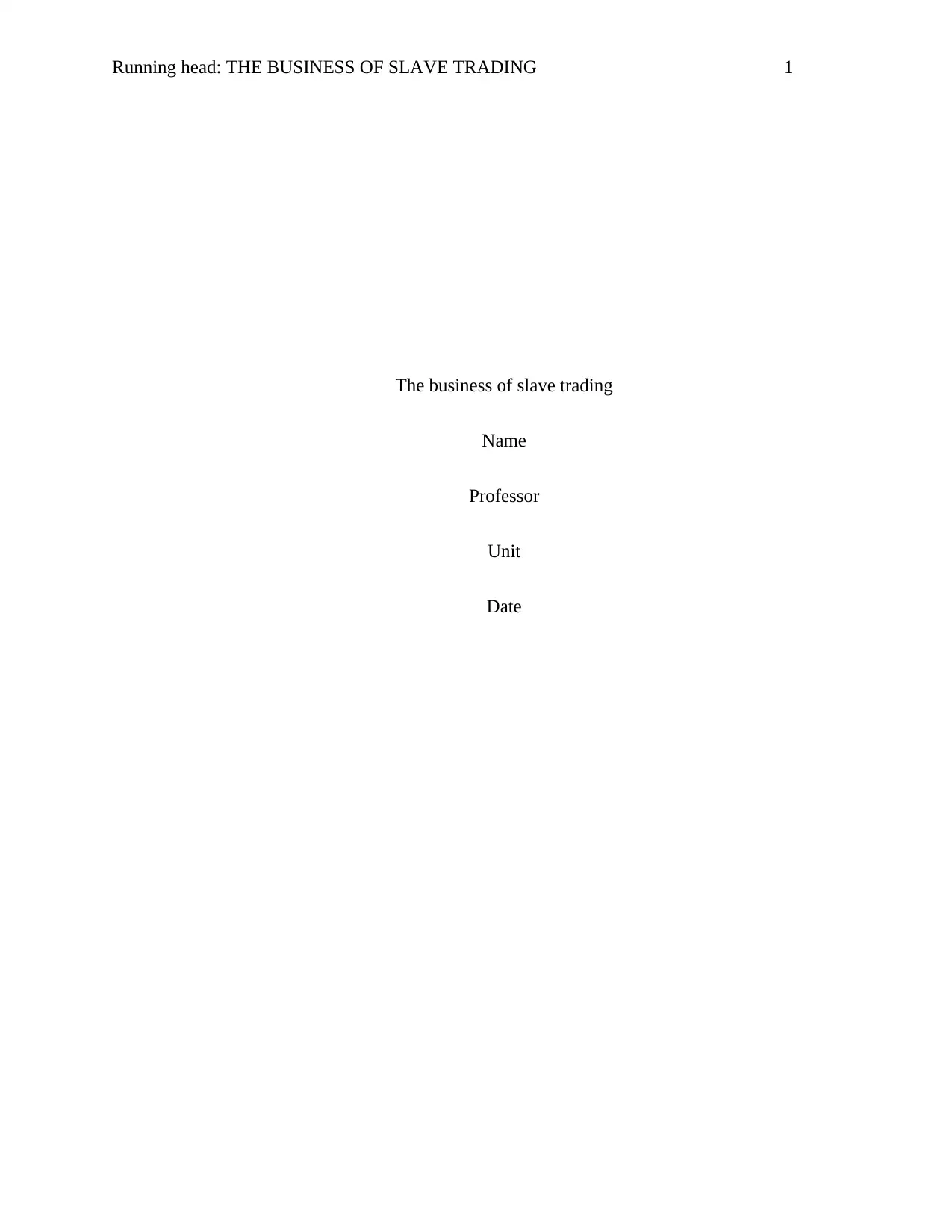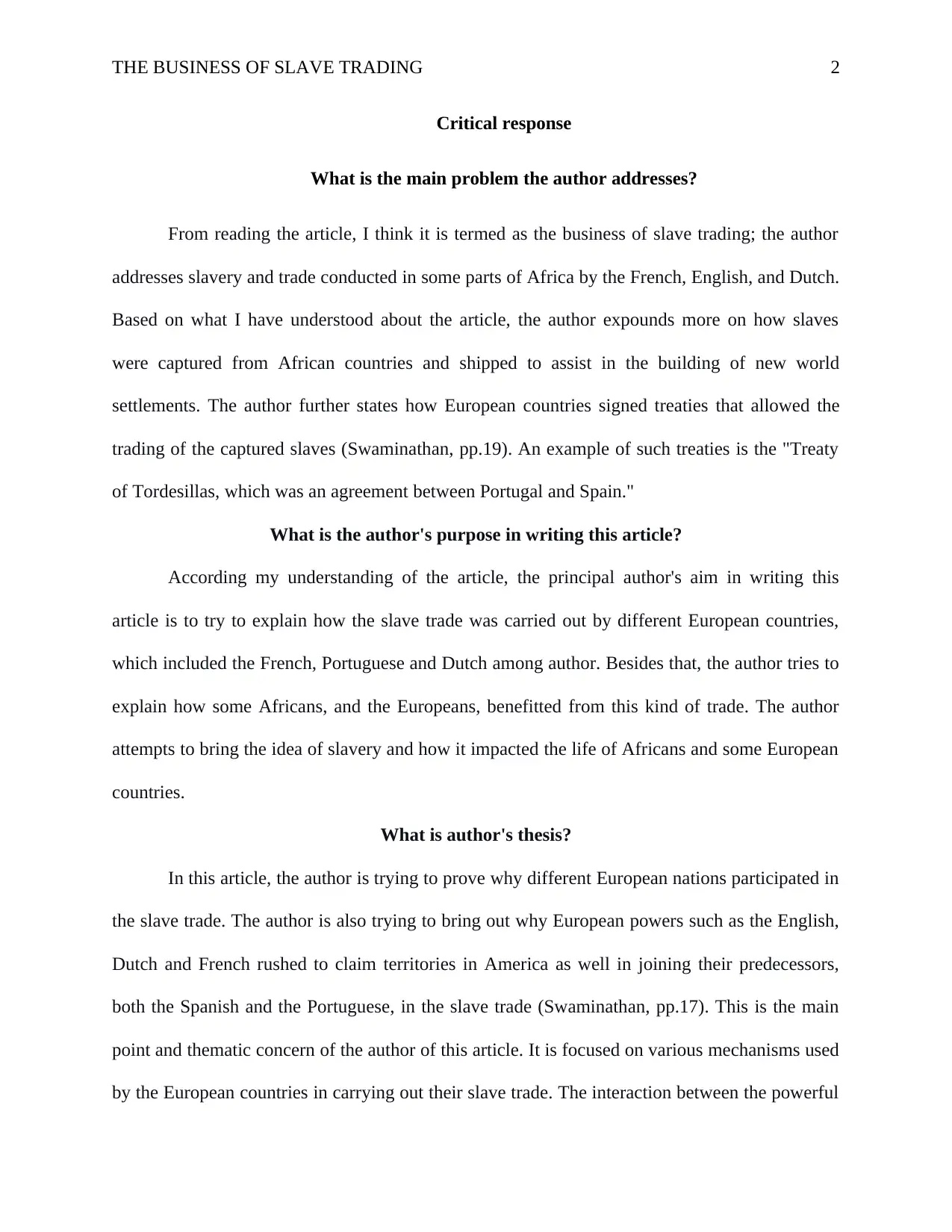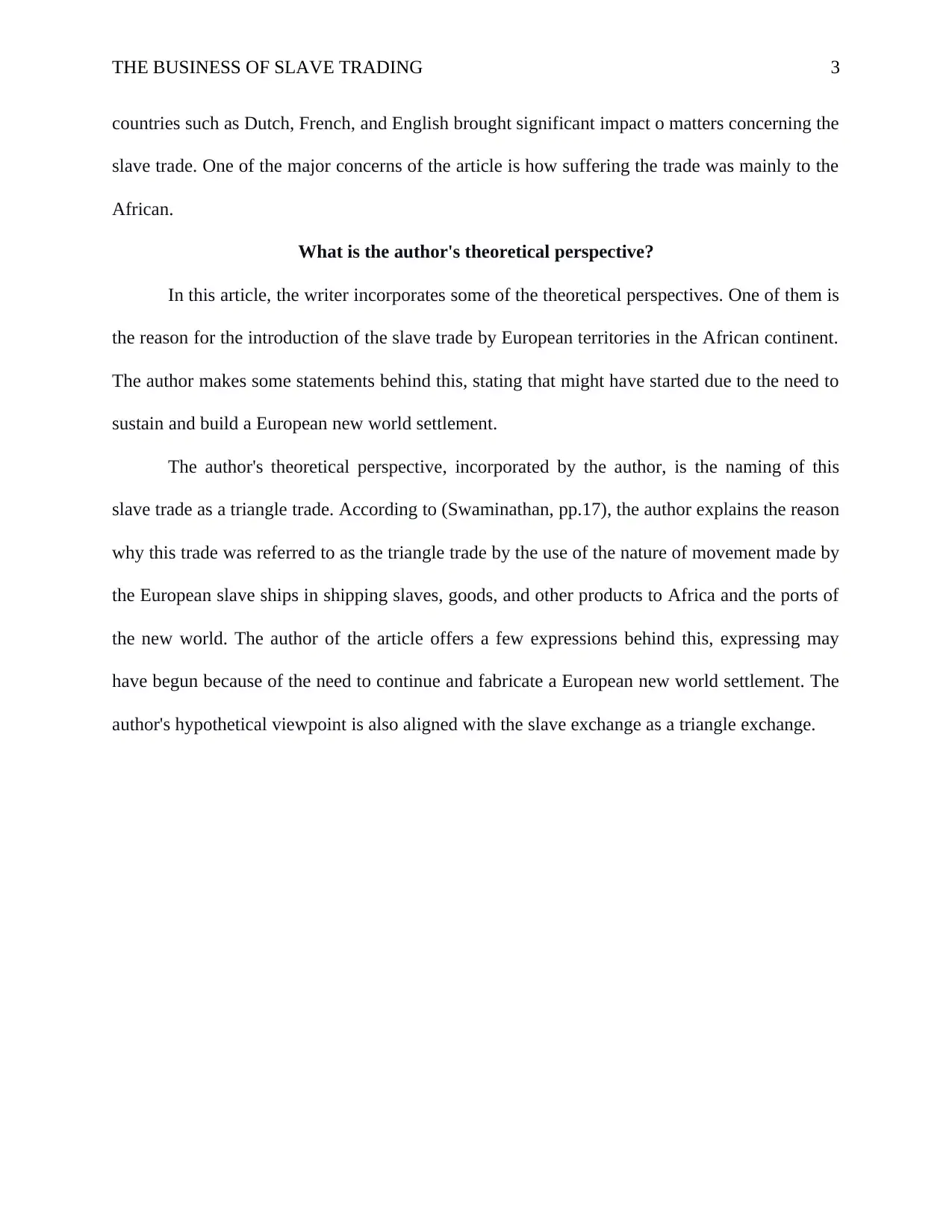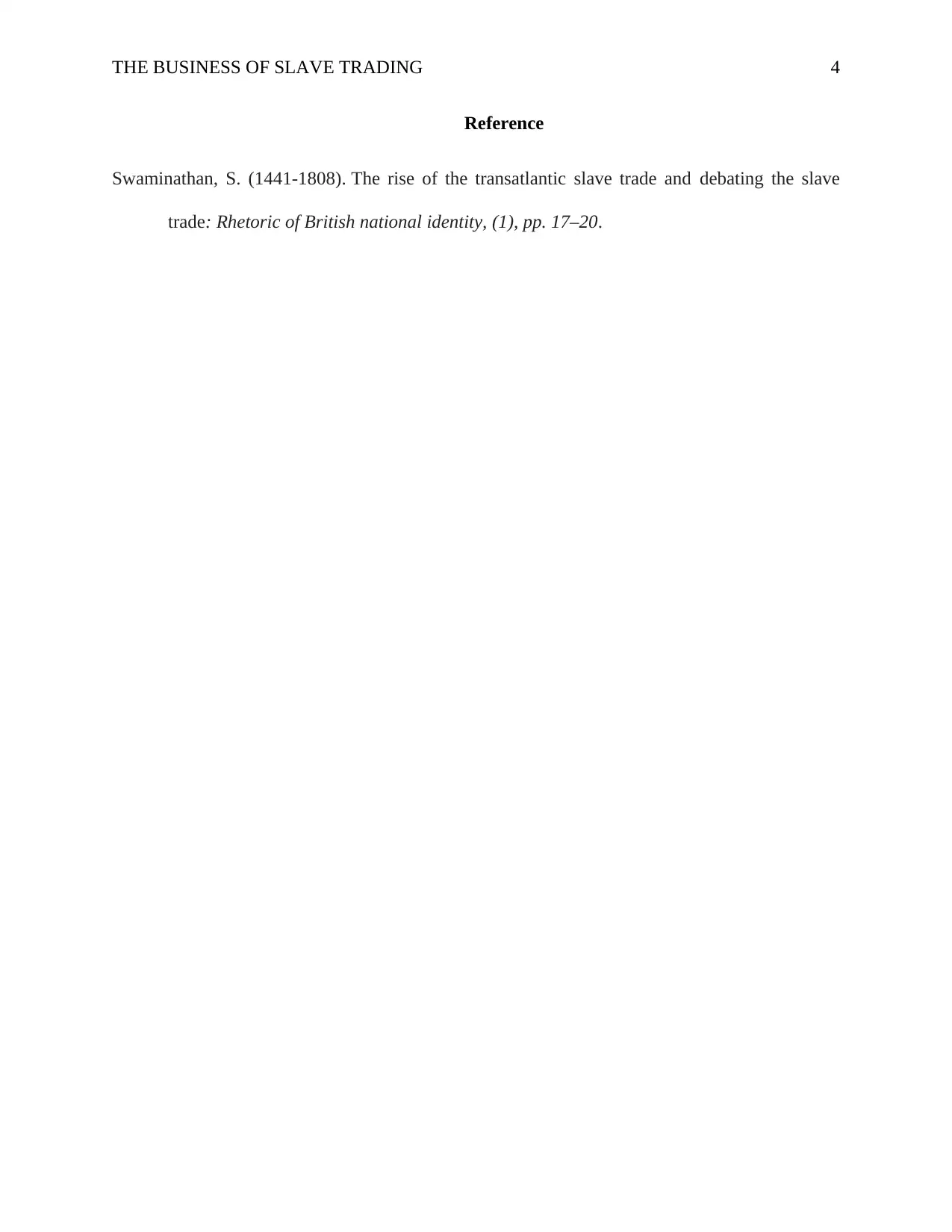Report: The Business of Slave Trading and Its Historical Impact
VerifiedAdded on 2022/08/09
|4
|633
|134
Report
AI Summary
This report provides a critical analysis of the transatlantic slave trade, focusing on the business aspects and historical context. The report explores the motivations of European powers, including the French, English, and Dutch, in participating in the slave trade and their impact on African communities and the development of new world settlements. The author examines the trade's structure, including the "triangle trade," and highlights the treaty agreements that facilitated the trade. The report also addresses the author's perspectives, including the reasons behind the slave trade and the impact on the enslaved. The analysis references the works of Swaminathan, providing insights into the origins and impacts of the transatlantic slave trade.
1 out of 4








![[object Object]](/_next/static/media/star-bottom.7253800d.svg)